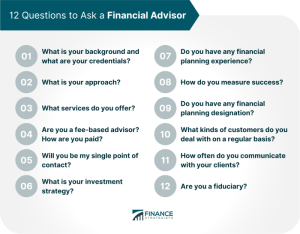
Exploring the realm of Financial advisor strategies for maximizing 401(k) contributions unveils a landscape where prudent planning meets financial foresight. This guide promises a journey filled with insightful tips and expert advice, ensuring a secure and prosperous retirement ahead.
Delve deeper into the strategies Artikeld below and equip yourself with the knowledge needed to make the most of your 401(k) contributions.
Financial advisor strategies for maximizing 401(k) contributions
Saving for retirement is crucial, and maximizing 401(k) contributions can significantly impact your financial future. Financial advisors recommend various strategies to help individuals make the most of their retirement savings.
Importance of Maximizing 401(k) Contributions
- Contributing the maximum amount to your 401(k) account allows you to take advantage of tax benefits, such as tax-deferred growth on your investments.
- Maximizing contributions helps accelerate the growth of your retirement savings and ensures you have enough funds to maintain your lifestyle after retirement.
- By contributing more to your 401(k), you can potentially reduce your taxable income, leading to lower tax payments each year.
Tips for Calculating the Maximum Annual Contribution Limit
- For 2021, the maximum annual contribution limit for a 401(k) is $19,500 for individuals under 50 years old and $26,000 for those 50 and older.
- Consider factors like employer matching contributions and catch-up contributions to determine the maximum amount you can contribute each year.
- Regularly review your contributions and adjust them based on your financial situation and retirement goals.
Benefits of Contributing the Maximum Amount to a 401(k) Account
- Maximizing your 401(k) contributions can lead to a more comfortable retirement by building a substantial nest egg over time.
- It allows you to harness the power of compounding interest, where your investments generate earnings on both the principal and the accumulated interest.
- Contributing the maximum amount demonstrates your commitment to saving for retirement and taking control of your financial future.
Strategies for Increasing 401(k) Contributions Over Time
- Start by contributing enough to take full advantage of your employer’s matching contributions, as this is essentially free money added to your retirement savings.
- Consider automating your contributions to ensure consistent savings and avoid the temptation of spending money that could be put towards retirement.
- As your income grows or you receive bonuses or windfalls, allocate a portion of these funds towards increasing your 401(k) contributions.
Finance Insights Daily
Finance Insights Daily is a comprehensive financial news platform that provides key features and updates to help individuals stay informed about the latest developments in the world of finance.
Key Features and Updates
- Finance Insights Daily offers daily updates on market trends, investment opportunities, and economic indicators.
- Users can access expert analysis and insights on a wide range of financial topics, including stocks, bonds, and retirement planning.
- The platform also provides real-time updates on breaking news and events that could impact the financial markets.
Sources of Information
Finance Insights Daily gathers information from reputable sources such as financial institutions, government reports, and industry experts to ensure the accuracy and reliability of its content. By utilizing a diverse range of sources, the platform offers a well-rounded view of the financial landscape.
Quality and Reliability
- Compared to other financial news platforms, Finance Insights Daily stands out for its commitment to providing high-quality, reliable information to its users.
- The platform’s team of experienced financial analysts ensures that the content is accurate, up-to-date, and relevant to the needs of investors and financial professionals.
- Finance Insights Daily’s dedication to delivering trustworthy news and insights sets it apart from other platforms that may prioritize speed over accuracy.
Smart Finance Word
Smart Finance Word refers to the specialized terminology and jargon used in the finance industry to describe various financial concepts, products, and strategies. This language is essential for effective communication among professionals in the field and helps individuals navigate the complexities of personal finance.
Examples of Smart Finance Word
- APR (Annual Percentage Rate): The annual interest rate charged on borrowed money, including fees and other costs.
- 401(k): A retirement savings plan sponsored by an employer, allowing employees to save and invest a portion of their paycheck before taxes.
- Asset Allocation: The distribution of investments across different asset classes to achieve a balance of risk and return.
- Compound Interest: Interest calculated on the initial principal and the accumulated interest from previous periods.
Benefits of Understanding Smart Finance Word
- Empowers individuals to make informed financial decisions by understanding complex terms and concepts.
- Helps in comparing financial products and services to choose the most suitable options.
- Enables better communication with financial advisors and professionals for effective planning and investment strategies.
Role of Smart Finance Word in Promoting Financial Literacy
Smart Finance Word plays a crucial role in promoting financial literacy by providing individuals with the necessary knowledge and tools to manage their finances effectively. By familiarizing themselves with key financial terms and concepts, individuals can improve their financial literacy, make informed decisions, and work towards achieving their long-term financial goals.
Digital Finance
Digital Finance refers to the integration of digital technology into financial services, transforming the way individuals and businesses manage their finances. This shift has revolutionized traditional banking and investment practices, offering convenience, efficiency, and accessibility like never before.
Examples of Digital Tools and Platforms
- Mobile Banking Apps: Allow users to check balances, transfer funds, pay bills, and even invest in stocks from their smartphones.
- Robo-Advisors: Automated investment platforms that provide algorithm-based financial advice and portfolio management.
- Cryptocurrency Exchanges: Platforms where users can buy, sell, and trade digital currencies like Bitcoin and Ethereum.
- Crowdfunding Platforms: Enable individuals and businesses to raise capital from a large number of investors online.
Benefits and Challenges of Embracing Digital Finance
- Benefits:Increased accessibility, lower costs, real-time transactions, personalized services, and greater financial inclusion for underserved populations.
- Challenges:Security and privacy risks, potential job displacement due to automation, digital divide issues for those without internet access, and regulatory concerns surrounding new technologies.
Future Trends and Potential Innovations
- Artificial Intelligence and Machine Learning: Enhancing personalized financial advice and predictive analytics.
- Blockchain Technology: Improving transparency, security, and efficiency in transactions and record-keeping.
- Biometric Authentication: Strengthening security measures through fingerprint or facial recognition technology.
- Embedded Finance: Integration of financial services into non-financial platforms, such as e-commerce websites or social media apps.
Financial Advisor
Financial advisors play a crucial role in helping clients make informed investment decisions to secure their financial futures. They provide guidance, expertise, and personalized strategies to help individuals reach their financial goals.
Responsibilities and Roles
Financial advisors assist clients in creating investment plans tailored to their specific needs and risk tolerance. They analyze financial data, monitor market trends, and recommend suitable investment options to help clients grow their wealth over time.
Tips for Choosing a Reputable Financial Advisor
- Look for advisors who are fiduciaries, meaning they are legally required to act in their clients’ best interests.
- Consider advisors with relevant experience and a solid track record of success in helping clients achieve their financial goals.
- Check for any disciplinary history or complaints against the advisor through resources like the SEC or FINRA.
Qualifications and Certifications to Look For
- CFP (Certified Financial Planner): Demonstrates expertise in financial planning and investment management.
- ChFC (Chartered Financial Consultant): Provides specialized knowledge in areas like retirement planning and estate planning.
- CFA (Chartered Financial Analyst): Signals advanced knowledge in investment analysis and portfolio management.
Successful Financial Advisor-Client Relationships
Successful relationships between financial advisors and clients often result in achieving financial goals, growing investment portfolios, and maintaining financial security. Regular communication, trust, and a clear understanding of client objectives are key factors in these positive outcomes.
Future Skills Program

In today’s rapidly evolving finance industry, staying ahead of the curve is essential for career growth. One way to do this is by participating in a Future Skills Program, designed to equip finance professionals with the necessary skills and knowledge to thrive in the dynamic landscape of finance.
Objectives and Structure of a Future Skills Program
A Future Skills Program aims to provide participants with a comprehensive understanding of emerging trends, technologies, and best practices in finance. The program typically includes a mix of theoretical learning, practical applications, case studies, and hands-on projects to ensure a well-rounded skill set development.
- Understanding of FinTech innovations and their impact on traditional finance
- Data analysis and interpretation skills for informed decision-making
- Risk management strategies in an increasingly volatile market
- Knowledge of sustainable and ethical investing practices
Essential Skills and Knowledge Areas Covered
The essential skills and knowledge areas covered in a Future Skills Program for finance professionals are diverse and tailored to meet the demands of the industry. These may include:
- Advanced financial modeling and forecasting techniques
- Cybersecurity and data privacy considerations in financial transactions
- Regulatory compliance and governance frameworks
- Strategic leadership and communication skills
Benefits of Participating in a Future Skills Program
Participating in a Future Skills Program can significantly enhance career advancement opportunities for finance professionals. Some benefits include:
“Increased marketability and competitiveness in job applications”
“Ability to adapt to changing market conditions and industry trends”
“Expanded professional network and opportunities for collaboration”
Adapting to Emerging Trends in Finance
To stay relevant in the finance industry, a Future Skills Program must continuously adapt to emerging trends. This involves integrating new technologies, regulatory changes, and global market shifts into the curriculum. By staying agile and responsive to industry developments, participants can ensure they are well-equipped to navigate the evolving landscape of finance.
Conclusion
In conclusion, the discussed strategies offer a roadmap to financial stability and retirement readiness. By implementing these recommendations, individuals can pave the way for a financially secure future. Take charge of your retirement planning today and watch your investments grow over time.
Helpful Answers
What is the maximum annual contribution limit for a 401(k)?
The maximum annual contribution limit for a 401(k) in 2021 is $19,500 for individuals under 50 years of age and $26,000 for those 50 and older.
How can I increase my 401(k) contributions over time?
You can increase your 401(k) contributions over time by gradually raising your contribution percentage with each salary increase, making catch-up contributions if you’re eligible, and reevaluating your budget to find areas where you can save more for retirement.







